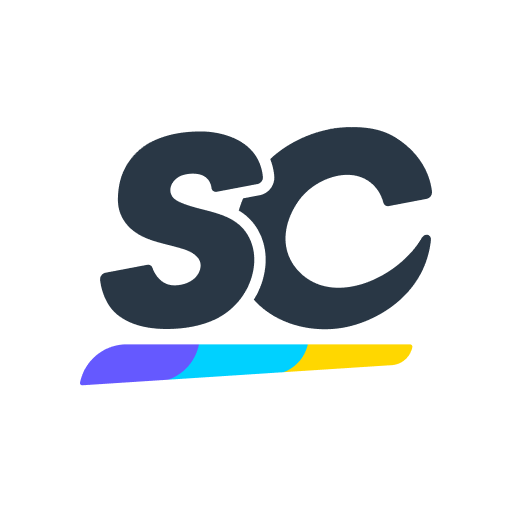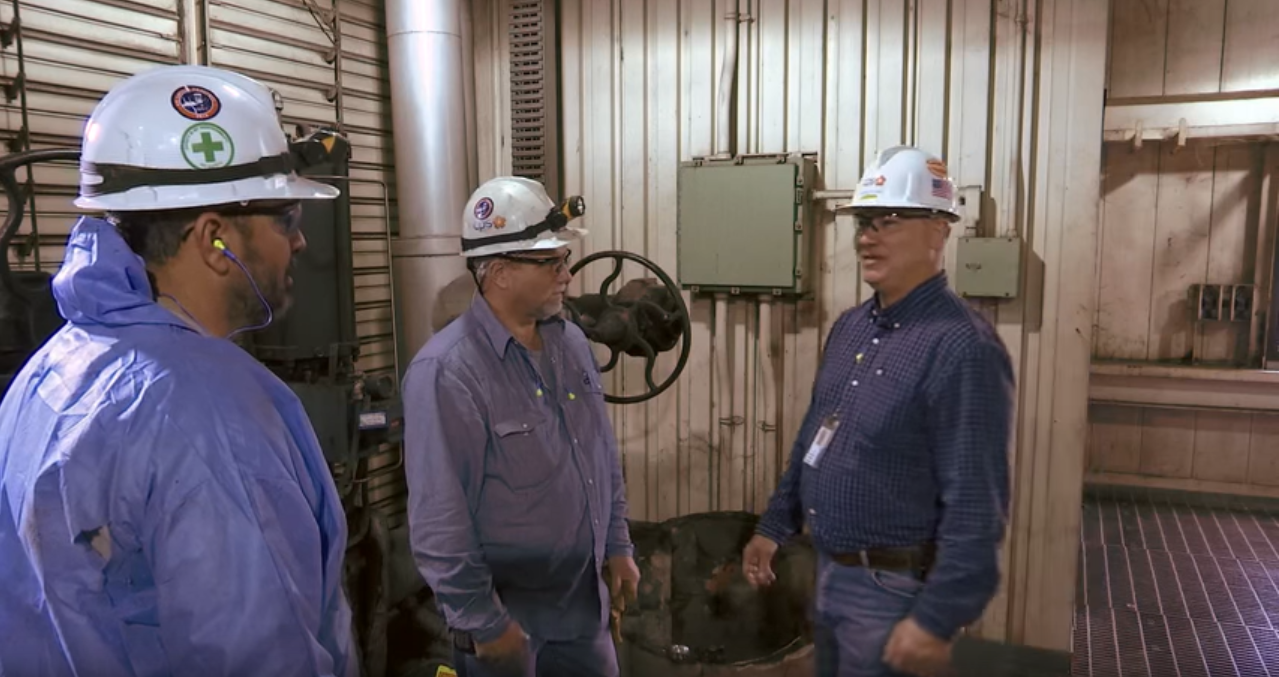Information
-
Site
-
Localização
-
Observed by
-
Realizado em
Behavior-based Safety Checklist
-
Safety Observation Steps:
1. Introduce yourself, put the worker at ease, and explain the process. Ask permission to do an observation.
2. Ask the person to explain the job that is being performed and define the hazards and precautions associated with the task/s they are performing.
3. Ask open-ended questions to learn more about at-risk barriers. (Ex: What’s the worst accident that can happen? How could you
be hurt doing this task?) -
[This is an example of how you can use iAuditor to include best practice reference images in your templates to assist with observations]
-
4. Observe the job and add comments by tapping NOTE/photos by tapping IMAGE. Provide positive feedback by praising safe behaviors first. Draw out the corrective action that may be required (create this action by tapping ACTION).
5. Obtain a commitment that the individual will carry out this action and thank the person for participating.
CRITICAL SAFE BEHAVIOR
PPE
-
Head Protection - (hard hat worn appropriately where the hazard exists)
-
At-Risk Barrier
- Training Issue, Unfamiliar
- Management Pressure/System
- Apathy, Insignificant
- Facility or Equipment Condition
- Disagreement on At-Risk Practices
- Personal Factors or Distractions
- Accepted Culture, Peer Pressure
- Environment-related
-
Eye & Face Protection (proper eye and face protection for the task - glasses, face shield, goggles)
-
At-Risk Barrier
- Training Issue, Unfamiliar
- Management Pressure/System
- Apathy, Insignificant
- Facility or Equipment Condition
- Disagreement on At-Risk Practices
- Personal Factors or Distractions
- Accepted Culture, Peer Pressure
- Environment-related
-
Hearing Protection (proper hearing protection where the hazard exists - ear plugs, ear muffs)
-
At-Risk Barrier
- Training Issue, Unfamiliar
- Management Pressure/System
- Apathy, Insignificant
- Facility or Equipment Condition
- Disagreement on At-Risk Practices
- Personal Factors or Distractions
- Accepted Culture, Peer Pressure
- Environment-related
-
Hand Protection (proper gloves)
-
At-Risk Barrier
- Training Issue, Unfamiliar
- Management Pressure/System
- Apathy, Insignificant
- Facility or Equipment Condition
- Disagreement on At-Risk Practices
- Personal Factors or Distractions
- Accepted Culture, Peer Pressure
- Environment-related
-
Body Protection (proper protective clothing, long pants, shirt with at least 4" collar)
-
At-Risk Barrier
- Training Issue, Unfamiliar
- Management Pressure/System
- Apathy, Insignificant
- Facility or Equipment Condition
- Disagreement on At-Risk Practices
- Personal Factors or Distractions
- Accepted Culture, Peer Pressure
- Environment-related
-
Visibility - Class II (minimum) hi-visibility safety vest
-
At-Risk Barrier
- Training Issue, Unfamiliar
- Management Pressure/System
- Apathy, Insignificant
- Facility or Equipment Condition
- Disagreement on At-Risk Practices
- Personal Factors or Distractions
- Accepted Culture, Peer Pressure
- Environment-related
-
Foot Protection (proper foot protection - steel-toed shoes or boots)
-
At-Risk Barrier
- Training Issue, Unfamiliar
- Management Pressure/System
- Apathy, Insignificant
- Facility or Equipment Condition
- Disagreement on At-Risk Practices
- Personal Factors or Distractions
- Accepted Culture, Peer Pressure
- Environment-related
BODY USAGE & POSITION
-
The worker is positioning his body to avoid injury by any moving hazards (caught between, falling objects)
-
At-Risk Barrier
- Training Issue, Unfamiliar
- Management Pressure/System
- Apathy, Insignificant
- Facility or Equipment Condition
- Disagreement on At-Risk Practices
- Personal Factors or Distractions
- Accepted Culture, Peer Pressure
- Environment-related
-
Lifting (proper lifting techniques - using legs, back straight, weight close to the body, feet flat on the ground, knees bent)
-
At-Risk Barrier
- Training Issue, Unfamiliar
- Management Pressure/System
- Apathy, Insignificant
- Facility or Equipment Condition
- Disagreement on At-Risk Practices
- Personal Factors or Distractions
- Accepted Culture, Peer Pressure
- Environment-related
-
Pinch Point (aware of and avoid pinch points - pinch points blocked, maintaining body parts out of pinch points)
-
At-Risk Barrier
- Training Issue, Unfamiliar
- Management Pressure/System
- Apathy, Insignificant
- Facility or Equipment Condition
- Disagreement on At-Risk Practices
- Personal Factors or Distractions
- Accepted Culture, Peer Pressure
- Environment-related
-
Awkward Position (proper body mechanics - over-extended, using leg not back when pulling)
-
At-Risk Barrier
- Training Issue, Unfamiliar
- Management Pressure/System
- Apathy, Insignificant
- Facility or Equipment Condition
- Disagreement on At-Risk Practices
- Personal Factors or Distractions
- Accepted Culture, Peer Pressure
- Environment-related
TOOLS & EQUIPMENT
-
Tool Use/Selection (using the right tool for the job and using it properly - correct style wrench, pry bar)
-
At-Risk Barrier
- Training Issue, Unfamiliar
- Management Pressure/System
- Apathy, Insignificant
- Facility or Equipment Condition
- Disagreement on At-Risk Practices
- Personal Factors or Distractions
- Accepted Culture, Peer Pressure
- Environment-related
-
Condition - tools, even if correct for the job, must be in good condition (air hoses, hose connections, pipe wrench, etc)
-
At-Risk Barrier
- Training Issue, Unfamiliar
- Management Pressure/System
- Apathy, Insignificant
- Facility or Equipment Condition
- Disagreement on At-Risk Practices
- Personal Factors or Distractions
- Accepted Culture, Peer Pressure
- Environment-related
-
Position Parked (the vehicle is left in the position which creates the least possibility of an incident and safety of the public)
-
At-Risk Barrier
- Training Issue, Unfamiliar
- Management Pressure/System
- Apathy, Insignificant
- Facility or Equipment Condition
- Disagreement on At-Risk Practices
- Personal Factors or Distractions
- Accepted Culture, Peer Pressure
- Environment-related
EYES ON PATH/HANDS
-
Eyes On Path (watching where you're going and go where you're watching - looking for/being aware of hazards).
-
At-Risk Barrier
- Training Issue, Unfamiliar
- Management Pressure/System
- Apathy, Insignificant
- Facility or Equipment Condition
- Disagreement on At-Risk Practices
- Personal Factors or Distractions
- Accepted Culture, Peer Pressure
- Environment-related
-
Eyes On Hands (aware of hand placement - watching where hands are placed during work or near hazard, not being distracted)
-
At-Risk Barrier
- Training Issue, Unfamiliar
- Management Pressure/System
- Apathy, Insignificant
- Facility or Equipment Condition
- Disagreement on At-Risk Practices
- Personal Factors or Distractions
- Accepted Culture, Peer Pressure
- Environment-related
-
Ascending/Descending (proper climbing techniques on trucks and trailers - facing the ladder, not skipping rungs or steps, hold onto handles)
-
At-Risk Barrier
- Training Issue, Unfamiliar
- Management Pressure/System
- Apathy, Insignificant
- Facility or Equipment Condition
- Disagreement on At-Risk Practices
- Personal Factors or Distractions
- Accepted Culture, Peer Pressure
- Environment-related
-
Travel Path (non-hazardous route of travel, a path of the least potential incident - walking/driving around spills, barricades, rough terrain)
-
At-Risk Barrier
- Training Issue, Unfamiliar
- Management Pressure/System
- Apathy, Insignificant
- Facility or Equipment Condition
- Disagreement on At-Risk Practices
- Personal Factors or Distractions
- Accepted Culture, Peer Pressure
- Environment-related
-
Travel Speed (rate of speed to minimize potential incidents based on environment, surroundings or changing conditions)
-
At-Risk Barrier
- Training Issue, Unfamiliar
- Management Pressure/System
- Apathy, Insignificant
- Facility or Equipment Condition
- Disagreement on At-Risk Practices
- Personal Factors or Distractions
- Accepted Culture, Peer Pressure
- Environment-related
COMPLETION
-
Additional Observations
-
Observer Name & Signature












